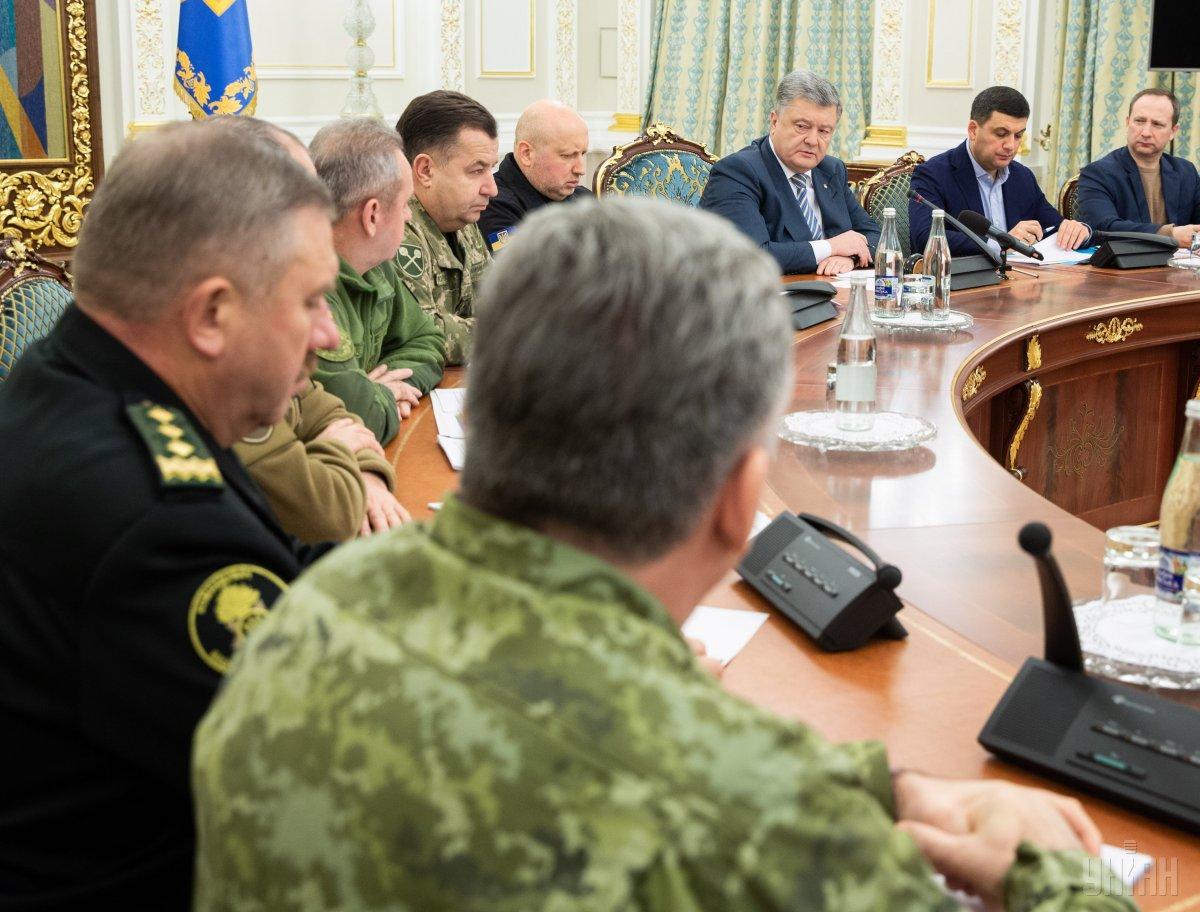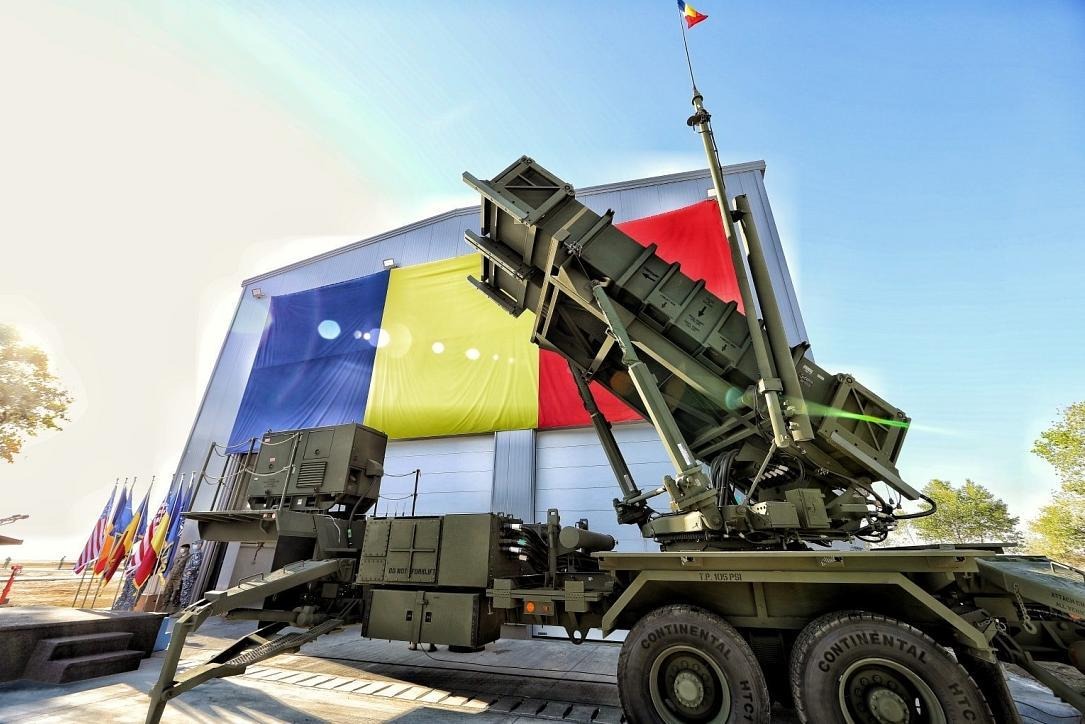
Martial Law in Ukraine: A Rehearsal for War
Martial Law in Ukraine: A Rehearsal for War
In late evening, on November 26, the Verkhovna Rada (Ukrainian parliament) implemented Martial Law in selected regions of Ukraine that is to last until December 26 (Rada.gov, November 26). President Petro Poroshenko pushed the legislature to adopt this measure after the Russian Coast Guard attacked three Ukrainian naval ships and captured their crew a day earlier (see EDM, November 26, 28, 29). This attack took place in international waters, in violation of the 2003 bilateral agreement between Russia and Ukraine as well as international law (see EDM, December 10).
After the incident, Ukraine’s National Security and Defense Council (NSDC) agreed to impose Martial Law. The first draft put forward by the NSDC would have declared Martial Law over the whole territory of the country. But the most crucial aspect was actually the proposed duration: 60 days. Critics of the measure, particularly those in political opposition to Poroshenko, viewed this time frame as an attempt to cancel presidential elections, scheduled for March 2019. They charged that the head of state had personally provoked and manufactured the current crisis in a sly attempt to remain in power despite his flagging popular support.
Following debate and negotiations in the parliament, the final Martial Law that passed includes several key changes. First, the territory is limited to only ten regions—mainly those that border on Russia or territories currently occupied by Russian forces. Second, the imposition of Martial Law expires after only 30 days. Finally, the language of the bill explicitly declares that the presidential election will take place on schedule, in March 2019.
The ruling coalition, unsurprisingly, voted for Martial Law (184 votes), arguing for its necessity based on the fear that Russia may be preparing for a full-scale attack from across the border (Mil.gov.ua, November 26, 2018). Poroshenko’s main rival, Yulia Tymoshenko, the leader of the Batkivschina (Fatherland) party, claimed that Martial Law should have been imposed much earlier (after the annexation of Crimea or the battle for Illovaysk). Although, according to transcripts of NSDC hearings in 2014, at the time, she in fact spoke out against declaring Martial Law and opposed a military response to the Russian aggression in Crimea (Texty, February, 22, 2016). Additionally, she has repeatedly accused Poroshenko of attacking the freedom and rights of the people. The same point of view is shared by another opponent of the President—Radical Party head Oleh Lyashko. Despite the criticism, however, most deputies of these two parties (with the exception of 29 “no’s”) voted for the law (Rada.gov.ua, November 26, 2018) in order to show a pro-Ukrainian, patriotic line for their electorate. Voting against Martial Law in the present political situation would have likely been widely perceived as a betrayal of the national interest.
Perhaps most significant was the speech on the floor delivered by member of parliament and co-chair of the “Opposition Bloc,” Oleksandr Vilkul. His rhetoric, closely echoed by Vidrodzhennya (Revival) party head Viktor Bondar, was clearly in line with Russian propaganda—Poroshenko is leading a civil war against his own people; there is no will in the government to find a peaceful diplomatic solution; Martial Law is only an attempt at a further usurpation of power (Rada.gov.ua, November 26). The Opposition Bloc collectively cast 21 votes against the decision.
All parties used these hearings to push forward their presidential campaigns. Meanwhile, the political gains that may accrue to Poroshenko as a result of declaring Martial Law remain unclear for now; he will need to demonstrate some concrete results in just 30 days. On the one hand, the decision will probably mobilize the patriotic wing of Ukrainian society. But on the other hand, Poroshenko might disappoint by delivering insignificant results before Martial Law is lifted. Also, the measure can be expected to boost anti-government sentiment among the (minority) pro-Russian opposition electorate. Furthermore, if support for Martial Law significantly flags in the coming weeks, the political opposition might end up accusing the president of raising a false alarm.
At the same time, there are growing signs of a renewed psy-ops campaign targeting Ukraine, planned and coordinated by Russia. Notably, since at least a week prior to the recent naval attack in the Black Sea, Ukrainian Facebook users noticed a large uptick in bot accounts sending them friend requests. Moreover, various suspicious social media accounts (many of them since deleted) have been disseminating provocative false news about Martial Law. Moscow even sought to boost panic and criticism of the Ukrainian government by spreading fake news stories citing a purported “decree” by Ukraine’s minister of defense and minister of interior, claiming that the state is preparing to seize private cars procured in Europe for the army or police. The story spread widely enough that the defense ministry decided to hold a special briefing to officially deny the story (YouTube, November 28). Additionally, in Sumy region (which borders on Russia), some individuals received text messages with mobilization orders or fake news stories (Ukrainian National News, November 27). The texts may have been sent out by Russian Electronic Warfare (EW) forces because the same messages were also received in Poland (Twitter.com/RCB_RP, November 27).
On November 30, Kyiv banned military-age Russian men from entering Ukraine (RFE/RL, November 30). The Ukrainian authorities have not put out any official calls for mobilization, to date. But on December 1, the General Staff of the Armed Forces of Ukraine (UAF) announced short-term, 15-day training courses for reservists and members of the territorial defense forces (Mil.gov.ua, December 1). Such testing of Ukraine’s existing mobilization system will likely be used to further optimize its national defense institutions.
Similarly, the November 25 naval incident in the Black Sea served as a test by the Russian side—a test of the international reaction. A lack of serious actions by the West is likely to serve as an invitation for the Kremlin to push further in its aggression. Whereas calls for “both sides” to de-escalate the situation undermine the reality that Ukraine was actually the victim of Russian belligerence. Ukraine lacks sufficient leverage to force Moscow to release its captured sailors—to say nothing of its other political prisoners sitting in detention in Russia. Therefore, the Kremlin will almost certainly use this current crisis to put pressure on the Ukrainian government and, in particular, on Poroshenko himself, whose electoral campaign explicitly revolves around portraying himself as the restorer of the Ukrainian military.


